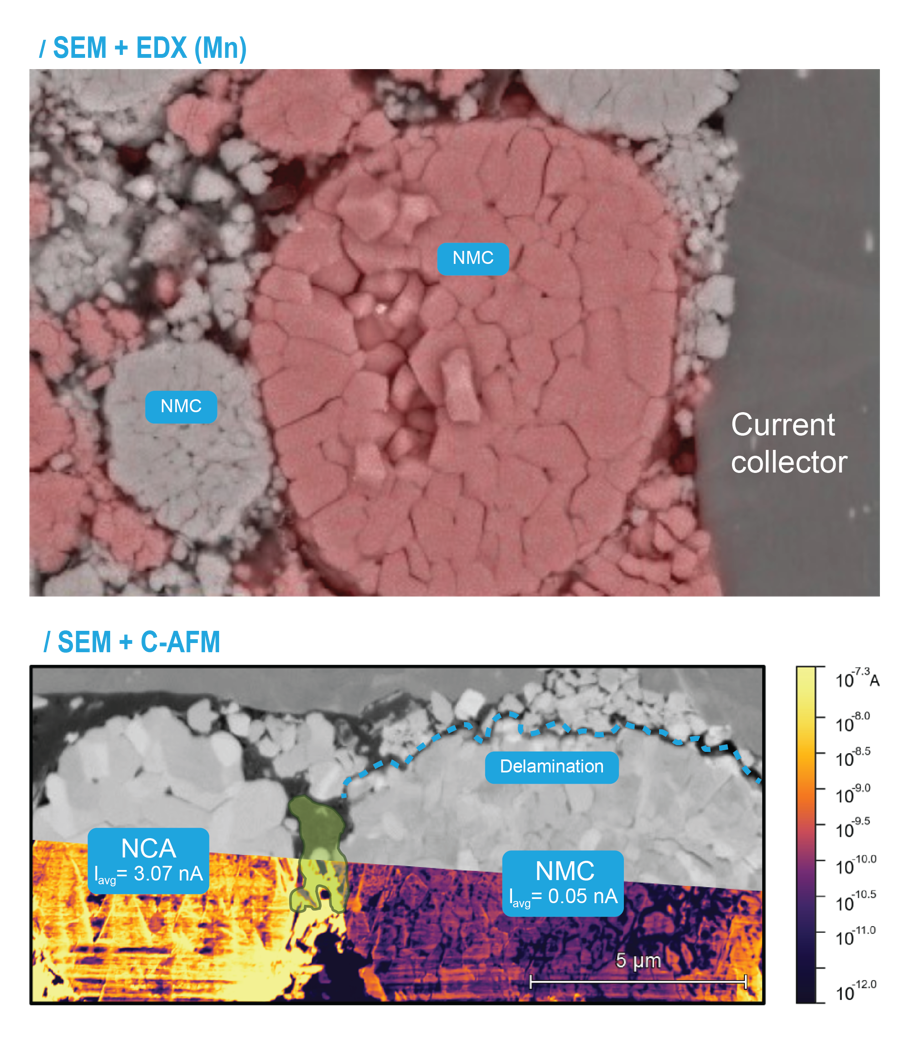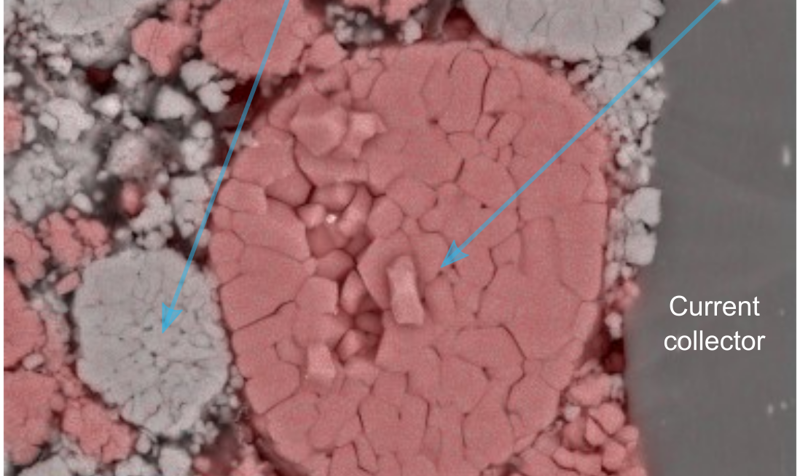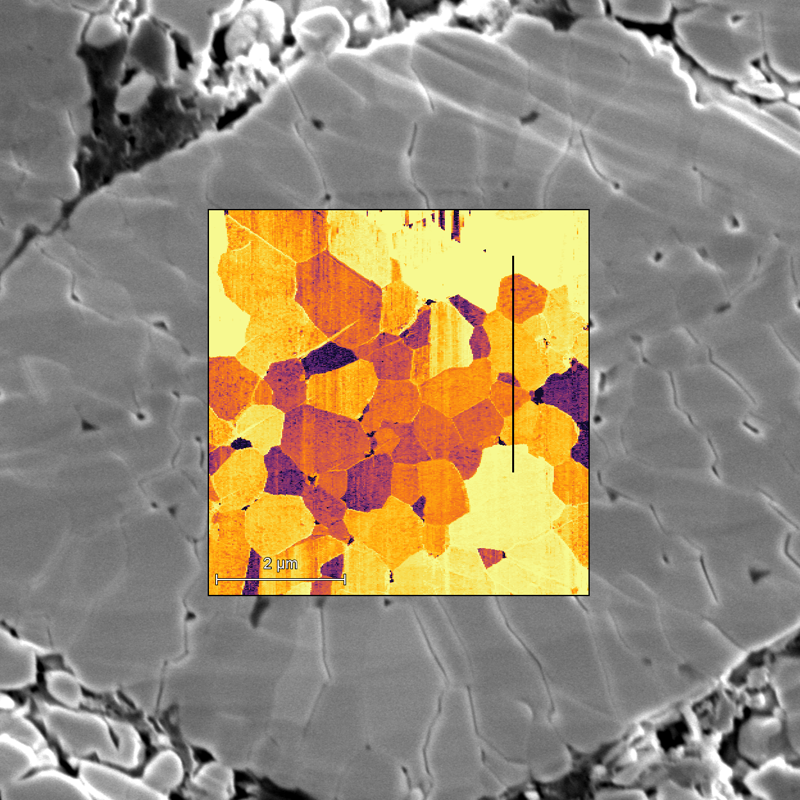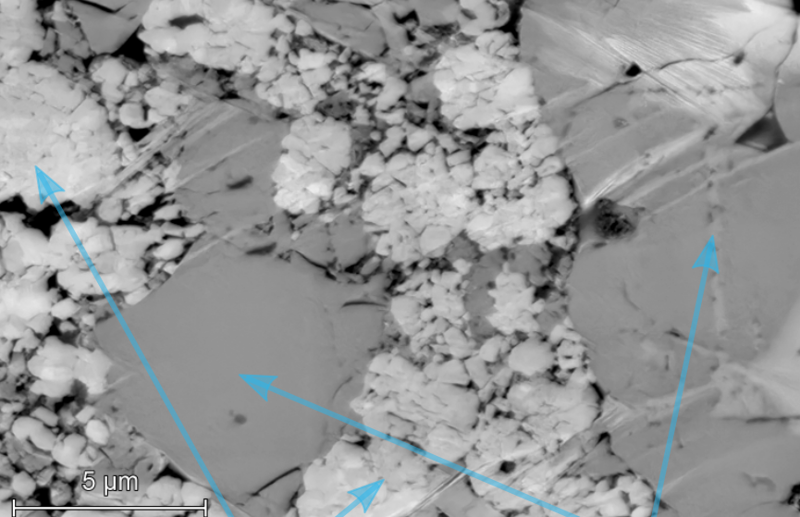In-situ analysis of cathodes composed of multiple cathode active materials
Although the first generation of Li-ion batteries almost exclusively employed LCO as the cathode material, more and more alternatives have started being utilised in the recent years. Today, majority of the market is occupied by materials such as LFP, NCA, and NMC, which are cheaper to produce and decrease the amount of cobalt, whose extraction is expensive and damaging to the environment in the cathodes. Sometimes the optimal performance of the battery is achieved by mixing different materials.
We have analysed the conductivity of grains in a cathode from a liquid electrolyte battery in its pristine state. The cathode contains particles made from two materials – the NCA and the NMC. These materials can be distinguished by the EDS. We have noticed a difference in the conductivity of an NCA and an NMC particle that spans three orders of magnitude, a value far exceeding initial expectations. This discrepancy can be explained by the delamination of the NMC particle, a loss of contact between the particle and the current collector, and the current is most probably flowing via the NCA particle through inter-particle connection of very conductive carbon additive.
Key added values of AFM-in-SEM analysis
1) Material identification by EDS
EDS mapping identifies regions containing Mn, thus allowing us to discern between NCA (does not contain Mn) and NMC (contains Mn) grains.
2) Selection of the region of interest
The tip is navigated by the SEM to a pair of two similarly large grains composed of different materials.
3) C-AFM measurement
The Conductive AFM is utilised to compare conductivities of different materials. In this case, C-AFM reveals three orders of magnitude conductivity difference. The delamination of the NMC particle heavily contributes to the decreased conductivity.

Measurement modes: C-AFM, EDS, SEM
LiteScope benefits:
- Transfer from the Broad Ion Beam or Glovebox to the AFM-in-SEM system without any exposure to air.
- Correlation of Topography, SEM images and Conductivity.
- Precise navigation to the region of interest.
Sample courtesy of Tomáš Kazda, FEEC BUT
Acknowledgement: Peter Priecel and Libor Novak, Thermo Fisher Scientific, and Ondrej Klvac, FEEC BUT

Want to discuss your own application?



